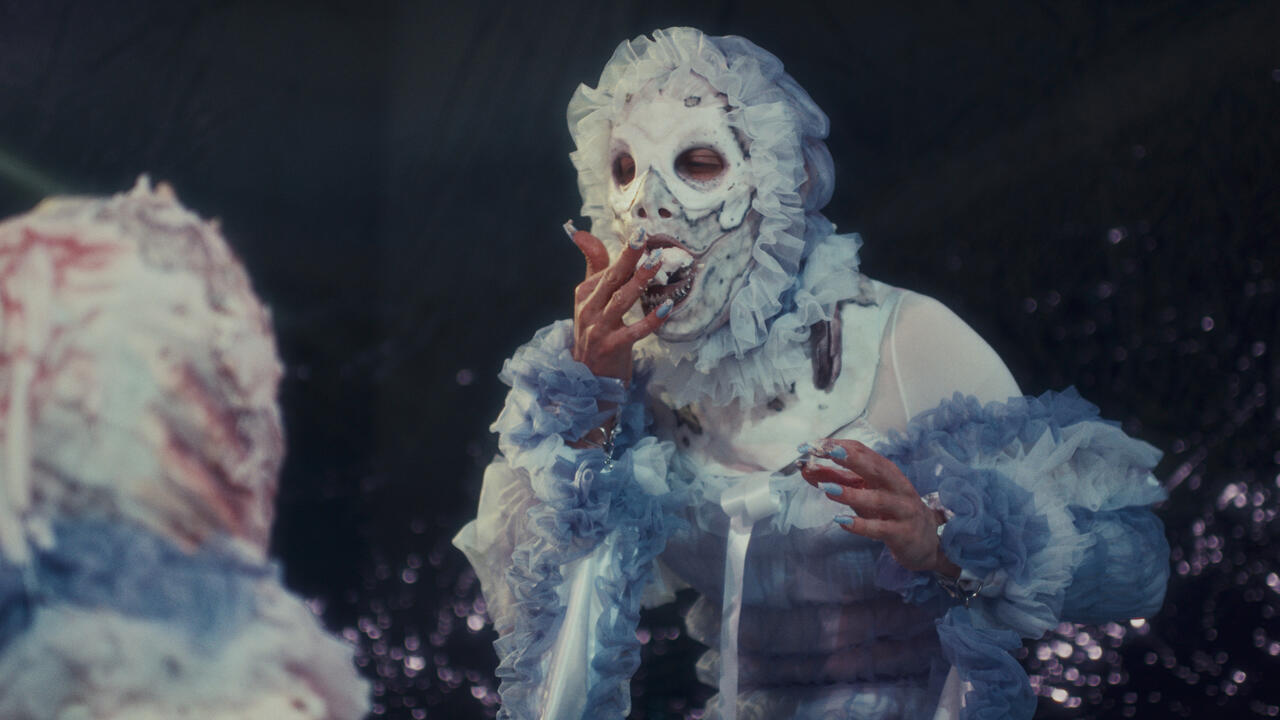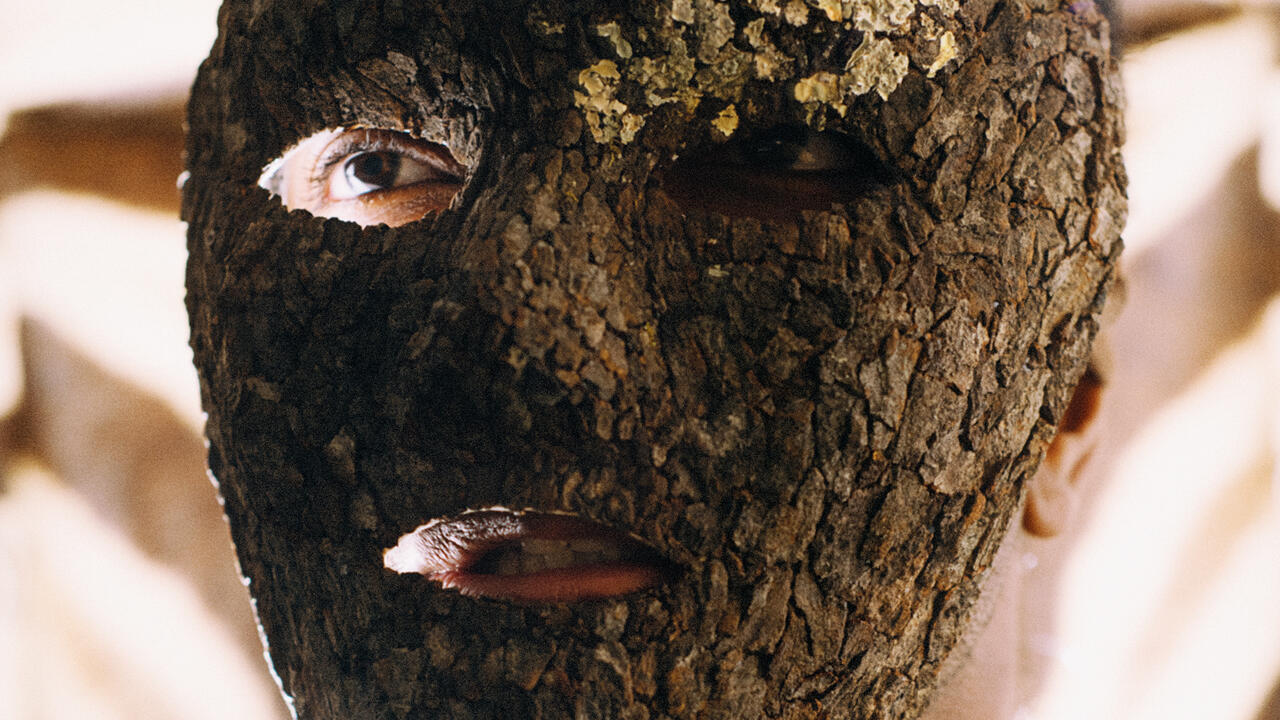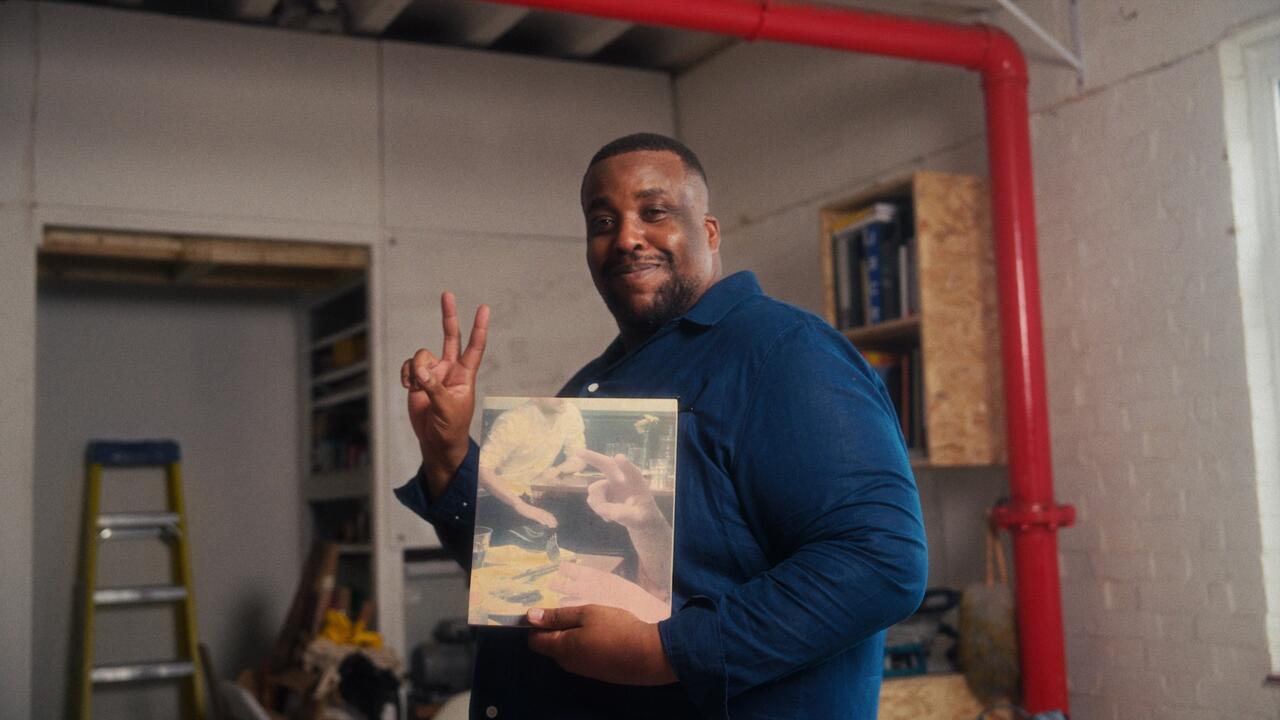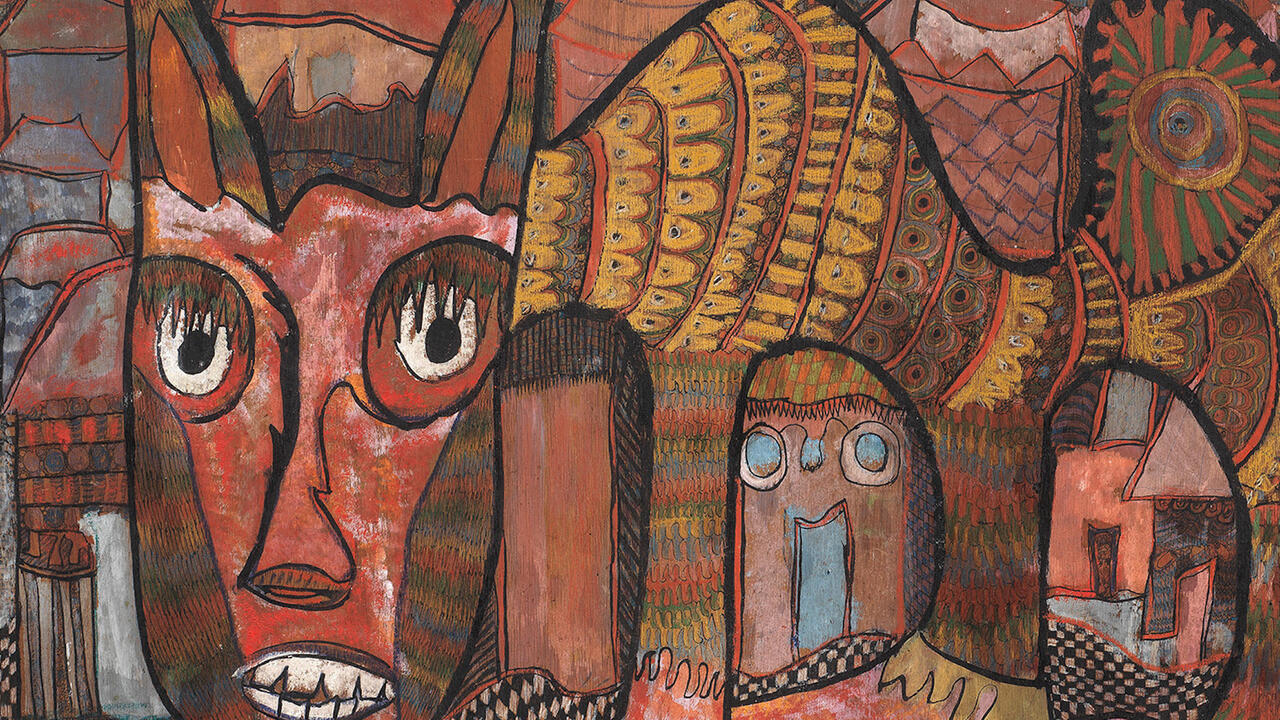Marlie Mul
Smoking, kissing and storing data
Smoking, kissing and storing data

‘Form follows function’ was one of architectural theory’s most hotly debated maxims. Coined by the American architect Louis Sullivan in 1896, the phrase was very much in vogue in the 1920s and ’30s; it was used to justify certain kinds of reconstruction projects in the postwar years, only to be discarded much later by Postmodernism to the dustbin of art history. Against this history, Marlie Mul toys with the influence that form and function – aesthetics and practicality – have on each other.
Mul placed objects, which looked somewhat like mouthpieces from hookah pipes, directly on the floor for her exhibition Your Wet Sleeve in My Neck (2010) at Galerie Lucile Corty in Paris. These hand-turned, painted wooden pipes with individual titles – Me (Connected), She (Angle) and She (Parallel) (all 2010) – are linked to each other by plastic tubing. According to Sullivan’s mantra, this ‘form’ ought to serve some ‘function’; smoke or liquids should circulate through these peculiar objects. But this is clearly not the case. Since the pipes are finely embellished, ornament becomes another element in Mul’s work. Decoration would appear to change form without adding to function. But aren’t finely crafted works more tempting – and pleasing – to use?
The Berlin-based artist also focuses on communication: from palpable connections, such as the plastic tubing running between the wooden pipes, to more abstract ones, such as satellites and cellular networks. Mul, working with Yngve Holen and Ilja Karilampi, devoted an entire exhibition to the topic of long-distance relationships and the technology of daily communication in I kiss you through the phone (2010). In a sense, her works show that the primary function of any object – whether pipe or phone – is social.
Another collaboration with Holen led to_ XYM_, a web-based project for distributing artist’s books (www.xym.no). Users can download data onto a USB stick specially designed by Mul, although Instant Object (2010/12) – a bulky piece made from brightly coloured hard foam – is far too big to be slipped into your pocket. With these functional yet over-sized objects, Mul is playing both on the kitsch aesthetics of technical gadgets and on the dematerialisation of their contents, from music stored as MP3s to artist’s books transmitted as PDFs. Mul’s USB sticks contrast the physical shrinking of storage spaces for information – its ‘liquidization’ – with the unwieldy materiality of its carrier, which, as solidified foam, was originally fluid. The result is that these impractical objects are all the more tangible.
After the hookah pipes, Mul took a more direct approach to the theme of smoking for her exhibition Stop Being So Attractive I Can’t Get Anything Done (2012) at Berlin’s Autocenter. Cigarette ends here (2011–12) – a series of silk scarves printed with cigarette motifs and cartoon figures – create a pseudo-naive aesthetic which seems to revive the harmless, innocuous air that smoking enjoyed decades ago. Now that smokers can only indulge outside of bars, cafes and the like, the habit has become a different kind of social ritual, with many brief encounters occurring between strangers huddling around outdoor ashtrays. Moreover, smokers are always finding a new function for a host of objects, namely, by turning them into ashtrays. Any nook or cranny, all kinds of unfortunate architectural details are ‘refunctioned’ in an instant. Mul reflected this metamorphosis with Air Vent/Butt Stop (2012): steel gratings and steel sheets fixed to the wall, their holes and slits overflowing with smouldering butts and rubbish. Despite their readymade appearance, these objects were specially designed and produced. Form is not following function here. On the contrary, it highlights the way that objects are appropriated and given entirely different uses: form follows function follows form follows function …
Translated by Fiona Elliott
















